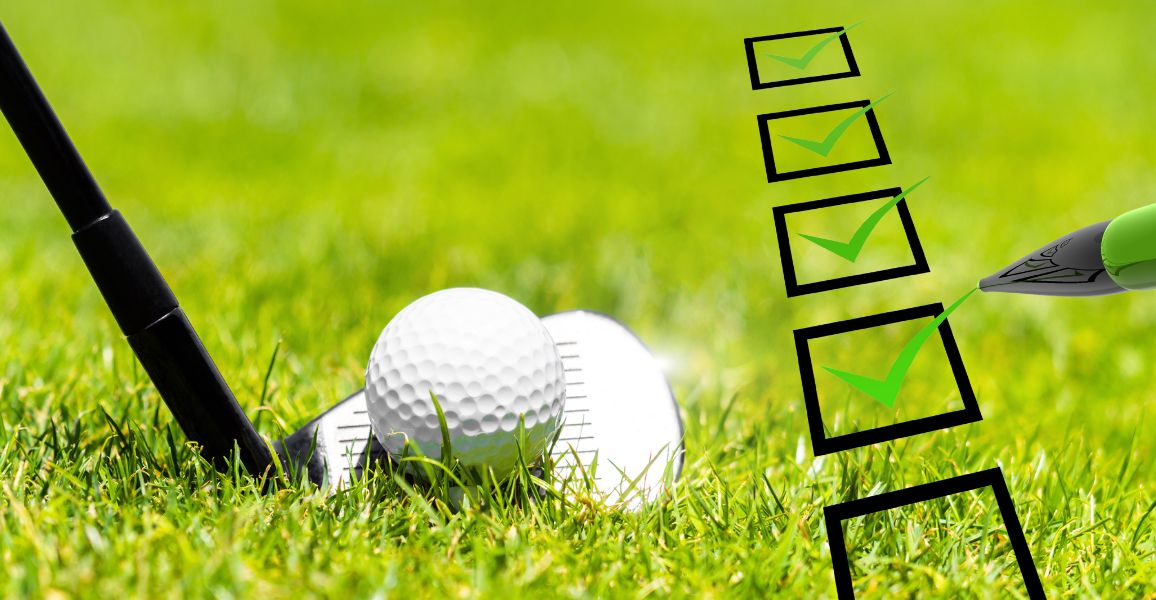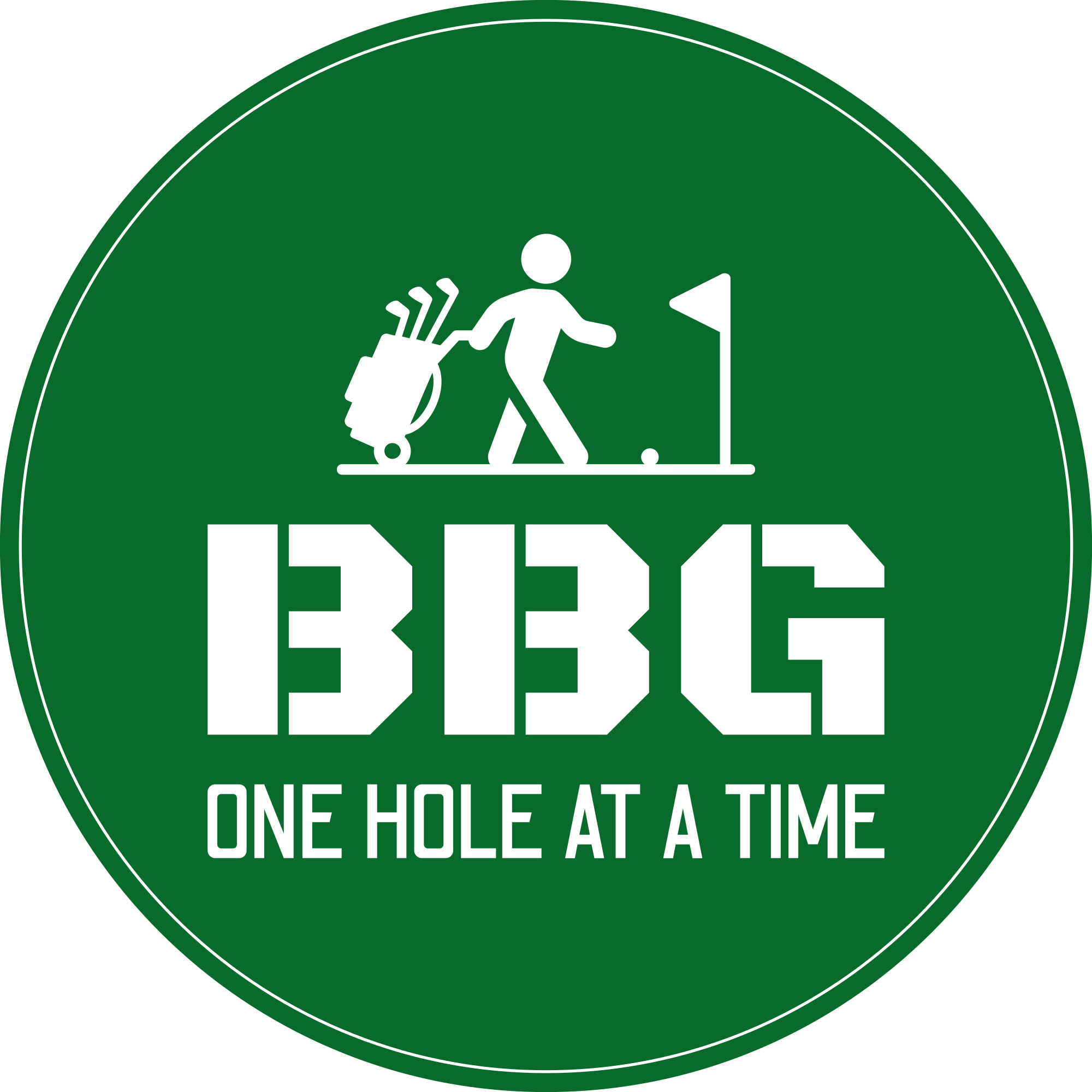Ever wonder why you can hit iron shots from the fairway with no problem, but when you put it on a tee, it gets messy?
Yeah, you and every other golfer are at some stage of their journey.
You need to be able to hit an iron off the tee box, not just for attacking par 3s but also for dog legs, short par 4s, or even the first tee until you get loose.
Most amateurs can increase the amount of fairways hit off the tee by 3% if they use a 3-wood.
A 3-wood or hybrid isn’t far off your driver, and hitting irons gives you much more control, straighter shots, and fewer slices, and overall, it is the safer play.
So this % of hitting fairways will jump up again by about 14% if you use a 4-iron instead of driver.
More fairways, fewer trees, or hitting 3 off the tee box will result in lower scores.
John Daly loved hitting irons off the tee so much that he got a 0-iron made, and he was pretty successful. Be like John, hit and iron when you have to.
Below you will find everything you need to know to strip them down the fairway.
When You Should Hit Irons Off The Tee

Hitting irons off the tee box doesn’t have to be dedicated to short par 3s only, especially if you’re a long-hitter.
No, you should consider hitting an iron off the tee for any of the below:
- Short Par 4s
- Dog Leg Holes
- Holes With Hazards Within Driving Distance
- Tight Holes
- On Cold Mornings Before You Warm Up
Short par 4’s are perfect holes to hit an iron and leave yourself a better shot.
So many golfers try to pump out a drive in the hopes of having a chip into the green.
However, this doesn’t always happen in the amateur game and, more often than not, results in lost shots or ruined scorecards.
If you were to play the percentages, going for it with a driver will cost you more shots in the long run.
Using a long iron or hybrid on a short hole with narrow fairways is a smart play.
Doing this will leave you with a short approach shot to the green and reduce the risk of you reloading after hitting it OB.
Similarly, if there is a hazard like some water that you must cross over or a sharp dog leg with trees on both sides.
You should use an iron.
Unless you’re extremely confident in your driving accuracy and distance you should avoid all hazards however possible.
This is why it’s essential to be able to hit irons off the tee when the situation calls for it.
Keep reading, and you will be hitting some crisp irons.
Should You Use A Tee When Hitting Irons

There is a reason that you aren’t allowed to use tees anywhere else but a tee box.
When you hit iron tee shots, you eliminate interference between the ball and club head at impact.
Resulting in you getting a cleaner more consistent strike and, ideally, some extra yardage.
The overwhelming majority of tour professionals will tee up too, because it gives them the most consistent results.
If they’re doing it you probably should too.
Ultimately, if you’re trying to shoot in the 80’s, your best score, or just beat your golf buddies, you should take every bit of help available.
How To Hit An Iron Of The Tee

Start With A Lower Tee Height
You want to tee it down low when teeing up to hit an iron off the tee box. The ball should only be lifted from the surface ever so slightly.
You’re trying to give yourself the perfect lie.
So, like the 3 bears not too high, you risk hitting an unexpected Phil Mick flop shot, but not too low that you may as well be hitting off the deck.
Teeing up too high is not what you want with an iron.
Many high-handicap players can succeed by teeing it higher because they may tend to top the ball.
If you’re setting up for a driver or fairway wood, the opposite is true because you aim to strike the golf on the upswing.
However, for an iron, you want to make contact with the ball on your downswing and let the club loft get the ball into the air.
Watch Out For Uneven Tee Boxes

Not every golfer gets the luxury of playing on perfectly flat tee boxes, but you’ve got to make the most of what you have.
You know as well as I do that some tees are just awful and can give you such an uneven surface you’d prefer to take your iron shot from the cart path.
Finding the flattest part of the tee is essential if you’re going to hit consistent iron shots.
Even if that means taking your shot from further back, it’s worth it. The goal is to find a place where your ball is level with your feet.
Strike Down On The Golf Ball
Striking down on the ball sounds more aggressive than what you’re trying to achieve.
In reality, you’re trying to make contact with the ball just at the end of your downswing, followed by your follow-through or upswing.
The main thing is that you aim to make contact with the ball first and then the turf for a pure strike.
It’s also important to know that the divot you take after contact will not be the same for all your irons.
You will take a much larger divot for your shorter irons with more loft, as the clubface angle easily cuts through the ground.
Longer irons with less loft should take a slightly smaller divot, as the attack angle will become less severe as the ball position moves up in your stance.
Don’t Try To Hit Any Harder Than Usual

The aim of the game is to swing at a speed that you have no problem following through with and holding your finish.
If you’re stumbling around off balance, you’re swinging too hard.
However, more often than not, this goes out the window once a tee box is involved.
To hit pure irons, you must trust that you selected the right club to get you there without hitting the iron shot of your life.
Whenever you’re stepping up to the tee and feel like you have to put a little extra with a club to get it there, just put it back in the bag and go with one club up to swing naturally.
Irons have different degrees of loft for a reason.
When starting, you think that swinging fast is the only way to swing.
The pros swing like crazy, so that must be the key.
But the pros nailed their accuracy first before they started hitting bombs off the tee box.
As a beginner, your primary focus should be putting the ball where you want it.
Then, once you’re comfortable, you can start cranking it up a notch and pipe one down the fairway.
Watch Your Stance And Posture
To make solid contact with your irons, you must reduce any factors affecting your swing.
Standing over the golf ball checklist:
- Your head stays in the same position
- You don’t overdo your weight transfer
- You feel sturdy and have a solid base
- You shouldn’t try to help the ball into the air
- Swing smooth
- Tempo is more important than speed
- Trust your swing
The more unnecessary movements you can eliminate, the more consistent you will become.
Short Irons And Long Irons Will Have Different Setups
There are two main differences in setup between your short and long irons.
For your shorter irons, you will have a narrower stance, around shoulder width or a little less, and the golf ball position will be in the center of your stance.
As you get to the longer irons or clubs, your stance will widen, and the golf ball will move further up your stance, getting closer to your lead foot.
Short irons are generally from your 7 iron down to your wedges, and long irons from your 6 iron down to your 4, 3, 2, 1, or 0 iron if you’re John Daly.
If you need help hitting your shorter irons, check out this post.
Don’t Forget To Practice

With all the above in mind, you still need to practice to become 100% confident when stepping up to a tee with an iron in hand.
Try going to the driving range, having one session dedicated to your short or long irons, and leaving the fairway wood or driver in the bag.
Remember, practice makes perfect, but practice is rarely perfect!
Good iron play and a consistent tee shot will lead to even better scores.
Checkout the below post if you enjoyed this one:
Standard Golf Club Length Charts
What Hybrid Replaces A 3, 4 & 5 Iron?
